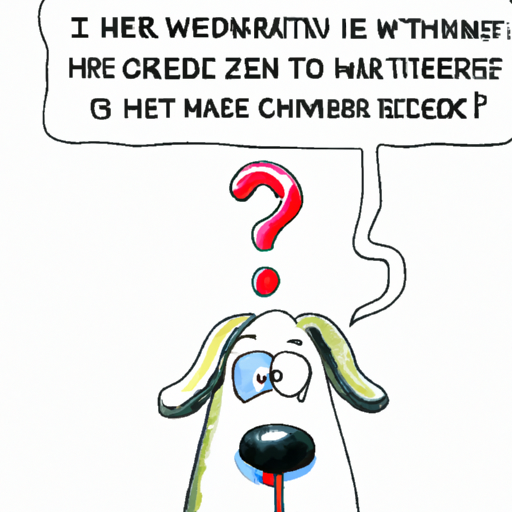As a caregiver to your beloved canine companion, you might have asked yourself, “What does it mean when a dog’s in heat?” This phrase refers to the estrous cycle that female dogs undergo, similar to the menstrual cycle in humans. Understanding this cycle is crucial for maintaining your dog’s health and preventing unplanned pregnancies. This comprehensive guide will delve into the ins and outs of the canine estrous cycle, its symptoms, and how you, as a caregiver, can manage it.
1. Understanding the Canine Estrous Cycle
The estrous cycle in dogs, commonly referred to as a dog being ‘in heat’, is a natural biological process that prepares the female dog’s body for reproduction. This cycle can start as early as six months in small breeds, while in larger breeds, it may begin later. Typically, a female dog will go into heat twice a year.
The estrous cycle has four stages:
- Proestrus: This is the start of the heat cycle, lasts about 9 days. Your dog’s vulva will swell, and you’ll notice a bloody discharge.
- Estrus: This is when your dog is receptive to mating, lasts 9 days on average. The discharge lightens in color.
- Diestrus: This is the post-heat phase, lasts about 60 days. No more discharge is present, and the vulva returns to its normal size.
- Anestrus: This is the resting phase, lasts about 130-150 days before the cycle starts again.
2. Recognizing the Signs of Heat
You, as a caregiver, should be aware of the signs that your dog is in heat. This knowledge helps you manage the situation appropriately and prevents unwanted pregnancies. Here are the main symptoms:
- Swollen vulva
- Bloody or straw-colored discharge from the vulva
- Frequent urination
- Changes in behavior, such as increased affectionate behavior or aggression
- Increased alertness or restlessness
3. Managing Your Dog’s Heat Cycle
When your dog is in heat, you’ll need to take extra precautions to ensure her safety and comfort. Remember, this is a vulnerable time for her. Here are some steps you can take:
- Isolation: Keep your dog away from male dogs to prevent mating.
- Hygiene: Keep your dog and her sleeping area clean to avoid infections.
- Comfort: Provide a quiet and comfortable space for your dog to rest.
4. Health Concerns Related to the Heat Cycle
Your dog’s heat cycle is a natural process, but it can come with some health risks. If your dog is consistently having irregular heat cycles, it may be a sign of an underlying health issue, such as ovarian cysts or uterine infection. If you notice any abnormal behavior or symptoms, consult with your veterinarian immediately.
5. The Role of Spaying in Managing the Heat Cycle
Spaying your female dog is a permanent way to manage the heat cycle and prevent unwanted pregnancies. Apart from this, spaying also reduces the risk of certain health issues like mammary cancer and uterine infections.
Spaying involves the surgical removal of the ovaries and uterus in female dogs. It’s a safe and commonly performed procedure. However, it’s a significant decision and should be made in consultation with your vet.
Frequently Asked Questions (FAQs)
Q: How long does a dog stay in heat?
A: On average, a dog will be in heat for about 18 days, but this can vary between dogs.
Q: Can a dog get pregnant during her first heat?
A: Yes, a dog can get pregnant during her first heat, but it’s not recommended as it can be risky for both the mother and puppies.
Q: How can I comfort my dog when she’s in heat?
A: Provide a quiet and comfortable space for her to rest. Use doggie diapers to manage the discharge and keep her clean.
Q: Is there a way to prevent my dog from going into heat?
A: Yes, spaying your dog is a way to prevent the heat cycle altogether.
Q: Is it necessary to breed my dog when she’s in heat?
A: Breeding your dog is entirely a personal decision and not a necessity. If you decide to breed, ensure it’s a responsible choice, considering your dog’s health and the availability of good homes for the puppies.



